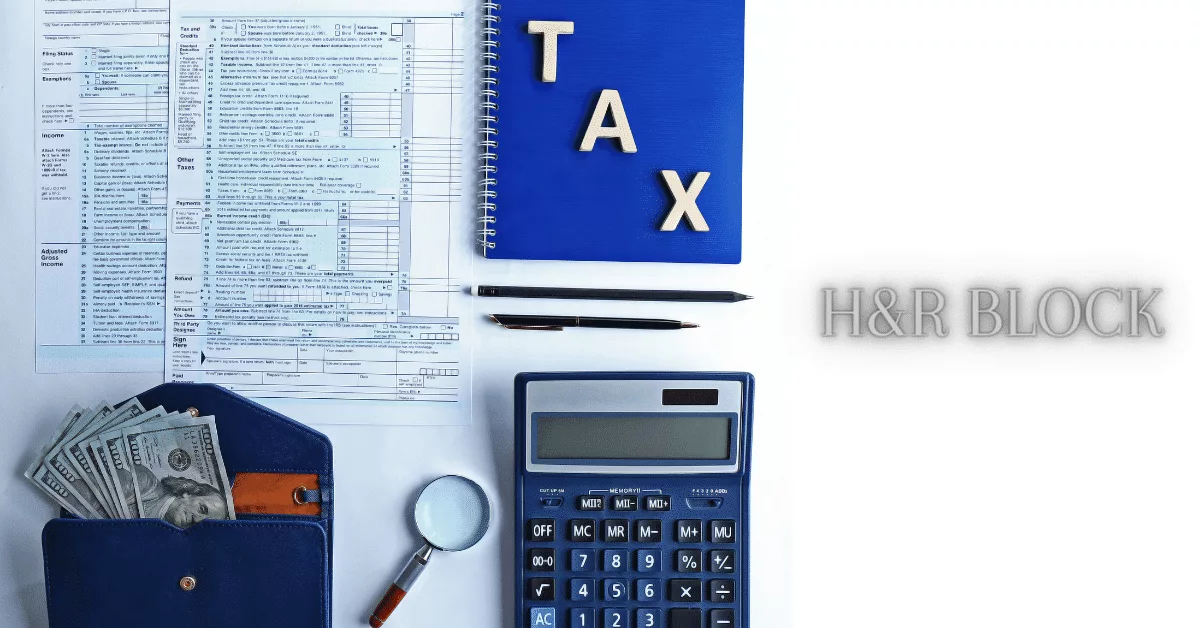
Navigating the intricacies of tax filing can be a daunting task, especially when it comes to reporting capital gains and losses.
For those utilizing H&R Block, a widely-used tax preparation platform, understanding how to enter Form 8949 is crucial for an accurate and stress-free tax filing experience. Form 8949 is the go-to document for reporting sales and other dispositions of capital assets, and mastering its entry on H&R Block is key to ensuring compliance with tax regulations.
In this guide, we will unravel the steps involved in accessing Form 8949 on the H&R Block platform, providing you with a comprehensive step-by-step walkthrough.
Whether you’re a seasoned investor or a first-time filer, this guide aims to demystify the process, making it easier for you to accurately report your capital gains and losses and navigate the tax season with confidence.
How Do I Enter Form 8949 On H&R Block?
To enter Form 8949 on H&R Block, follow these step-by-step instructions:
- Log in to Your H&R Block Account: Visit the H&R Block website and log in to your account.
- Navigate to the Tax Filing Section: Once logged in, find the section related to tax filing or continue with your tax return.
- Locate the Section for Entering Capital Gains and Losses: Look for the specific section or tab that deals with investment-related transactions. This may be labeled as “Investments” or “Stocks and Other Investments.”
- Access the Form 8949 Entry Interface: Within the investment section, you should find an option to enter details for Form 8949. Click on this option to proceed.
- Input Transaction Details: Once on the Form 8949 entry interface, you’ll be prompted to input details for each transaction. This includes the date of the transaction, type (buy or sell), and the amount.
- Follow Detailed Instructions: H&R Block will guide you through the process by providing detailed instructions for each field. Read these instructions carefully to ensure accurate data entry.
- Utilize Tips for Accuracy: Take advantage of any tips or guidance provided by H&R Block for accurately filling out the required fields. This may include using relevant documents, such as brokerage statements, for reference.
- Avoid Common Errors: Be mindful of common errors during data entry. Double-check the information you input to prevent mistakes that could impact the accuracy of your tax return.
- Review Before Submission: Before finalizing your tax return, thoroughly review the entered information. Ensure that all details on Form 8949 are accurate and reflect your actual transactions.
By following these steps, you should be able to successfully enter Form 8949 on H&R Block, facilitating a smooth and precise tax filing process. If you encounter any difficulties or have specific questions, consider reaching out to H&R Block’s customer support for further assistance.
Accessing Form 8949 On H&R Block
Step-by-step Guide On Navigating The H&R Block Platform
Here’s the step-by-step guide on navigating the H&R Block platform without round bullets:
- Login to Your H&R Block Account: Start by visiting the official H&R Block website and log in to your account using your username and password.
- Access Your Tax Return: Once logged in, look for an option that allows you to access or continue with your tax return. This is typically located on the main dashboard or in a menu labeled “My Taxes” or similar.
- Explore the Dashboard: Navigate to the dashboard, which is often the central hub for your tax return. Here, you may find an overview of your tax situation, links to different sections, and options to continue or review your return.
- Find the Investments Section: Look for a section specifically related to investments, stocks, or financial transactions. This could be labeled as “Investments,” “Financial Summary,” or something similar.
- Locate Capital Gains and Losses: Within the investment section, search for the category that deals with capital gains and losses. It might be named “Capital Gains and Losses” or something similar.
- Access Form 8949: Once you’re in the capital gains and losses section, find an option or link that allows you to enter details for Form 8949. This form is crucial for reporting sales and dispositions of capital assets.
- Follow the Data Entry Prompts: H&R Block will guide you through the process by providing prompts and fields for data entry. Enter the necessary details for each transaction as prompted.
- Save Your Progress: Periodically save your progress to ensure that you don’t lose any entered information. H&R Block usually provides an option to save and continue later.
- Review Your Entries: Before finalizing your tax return, review the entered information for accuracy. Ensure that all details related to Form 8949 are correct.
- Complete Other Tax Sections: If applicable, navigate to other sections of your tax return, such as income, deductions, or credits. Complete these sections as needed to ensure a comprehensive and accurate tax filing.
By following these steps, you should be able to navigate the H&R Block platform smoothly and enter the necessary information for Form 8949. If you encounter any challenges, refer to H&R Block’s help resources or contact their customer support for assistance.
Section For Entering Capital Gains And Losses
To locate the section for entering capital gains and losses on the H&R Block platform, follow these steps:
- Login to Your H&R Block Account: Visit the H&R Block website and log in to your account using your credentials.
- Access Your Tax Return: Once logged in, navigate to the section that allows you to access or continue with your tax return. This is typically labeled as “My Taxes” or a similar term.
- Explore the Dashboard: Look for a dashboard or main menu where you can view an overview of your tax return. This could include sections like income, deductions, and investments.
- Navigate to the Investment Section: Within the main menu or dashboard, find a section related to investments, stocks, or financial transactions. This may be labeled as “Investments” or something similar.
- Find Capital Gains and Losses: Once in the investment section, search for the specific category or option that deals with capital gains and losses. This could be named “Capital Gains and Losses” or something similar.
- Access Form 8949: Look for a link or option within the capital gains and losses section that allows you to enter details for Form 8949. This form is essential for reporting sales and dispositions of capital assets.
- Follow Prompts for Data Entry: H&R Block will likely guide you through the process with prompts and fields for data entry. Follow these prompts carefully to input the necessary information for each transaction.
- Review and Save Your Progress: Periodically review the information you’ve entered and save your progress. This ensures that you don’t lose any data and can return to complete your tax return later if needed.
By following these steps, you should be able to locate the section for entering capital gains and losses on the H&R Block platform and access Form 8949 to report your investment transactions accurately. If you encounter any difficulties, refer to H&R Block’s help resources or contact their customer support for assistance.
Transaction Details
Inputting Information For Each Transaction
Here are the detailed instructions for inputting information for each transaction on H&R Block without using round bullets:
- Access Form 8949: Log in to your H&R Block account and navigate to the section for entering capital gains and losses. Locate the option to access Form 8949.
- Identify Transaction Entry Interface: Within Form 8949, look for the transaction entry interface. This is the area where you will input details for each individual transaction.
- Select Transaction Type: For each transaction, specify the type (buy or sell). Indicate whether it’s a sale or disposition of a capital asset.
- Enter Transaction Date: Input the date of the transaction. This is crucial for accurately reporting the timing of the capital gain or loss.
- Provide Asset Details: Enter details about the asset involved in the transaction. This includes the name of the asset, its description, and any relevant identification number.
- Indicate Quantity and Price: Specify the quantity of the asset involved in the transaction and the price at which it was bought or sold. This information is essential for calculating the gain or loss.
- Choose Cost Basis Method: Select the cost basis method used for the transaction. Common methods include FIFO (First In, First Out) or specific identification.
- Input Proceeds and Cost Basis: Enter the total proceeds from the sale and the cost basis of the asset. H&R Block may provide additional fields for adjustments or additional costs related to the transaction.
- Review and Confirm: Carefully review the information entered for each transaction. Ensure that all details are accurate and match the supporting documentation, such as brokerage statements.
- Repeat for Each Transaction: If you have multiple transactions, repeat the process for each one, entering the details accurately.
- Save or Update Progress: Periodically save your progress to prevent loss of data. H&R Block typically provides an option to save your work and continue later.
- Finalize and Submit: Once all transactions are entered, review the entire Form 8949 for completeness and accuracy. After confirming, proceed to submit your tax return.
By following these detailed instructions, you can accurately input information for each transaction on H&R Block, ensuring the precise reporting of your capital gains and losses. If you have questions or encounter difficulties, refer to H&R Block’s help resources or seek assistance from their customer support.
Tips For Accurately Filling Out The Required Fields
Here are tips for accurately filling out the required fields when entering information on H&R Block:
- Organize Your Documentation: Gather all relevant documents, such as brokerage statements, trade confirmations, and receipts, before entering transaction details. Having these documents handy can ensure accurate data entry.
- Understand the Terminology: Familiarize yourself with the terminology used in Form 8949 and related fields. This includes terms like cost basis, proceeds, and different types of transactions (buy, sell, short-term, long-term).
- Verify Dates and Transactions: Double-check transaction dates and details against your records. Ensure consistency between the dates entered on H&R Block and those listed on your documentation.
- Use Accurate Asset Descriptions: Provide precise and consistent descriptions of the assets involved in each transaction. Use asset names, symbols, or identifiers exactly as they appear on your brokerage statements.
- Check Quantity and Price Details: Input the accurate quantity of assets involved in each transaction. Verify that the prices or amounts entered align with the corresponding transactions.
- Select the Correct Cost Basis Method: Choose the appropriate cost basis method for each transaction. Understand the implications of different methods (e.g., FIFO, specific identification) and select the method that best reflects your situation.
- Be Mindful of Adjustments and Additional Costs: Pay attention to any adjustments or additional costs related to transactions. Ensure that any adjustments made to the cost basis or proceeds are accurately reflected in the appropriate fields.
- Review Entries for Accuracy: Before finalizing, thoroughly review each transaction entry for accuracy. Look for any typos, incorrect amounts, or discrepancies between your records and the information entered.
- Save Progress Regularly: Periodically save your progress while entering transaction details. This prevents the loss of entered data and allows you to continue from where you left off in case of interruptions.
- Seek Clarification if Needed: If you’re unsure about specific details or terminology, refer to H&R Block’s guidance resources or seek assistance from their customer support.
By following these tips, you can enhance the accuracy of your data entry when filling out the required fields on H&R Block, ensuring that your tax return reflects your transactions correctly.
Common Errors To Avoid During Data Entry
Here are common errors to avoid during data entry on H&R Block without round bullets:
- Incorrect Dates: Ensure that transaction dates are entered accurately. Mistakes in dates can lead to errors in determining whether a capital gain or loss is short-term or long-term.
- Mismatched Asset Details: Consistently use the exact asset names, symbols, or identifiers as they appear on your brokerage statements. Mismatched details can lead to discrepancies in your tax calculations.
- Inaccurate Quantity and Price: Double-check the quantity and price of assets in each transaction. Errors in these fields can result in miscalculations of gains or losses.
- Choosing the Wrong Cost Basis Method: Select the correct cost basis method for each transaction. Choosing the wrong method can lead to inaccuracies in determining the cost basis and, consequently, the capital gain or loss.
- Omitting Adjustments or Additional Costs: Ensure that any adjustments or additional costs related to transactions are accurately reflected. Omitting these details can lead to incorrect reporting of the true gain or loss.
- Skipping Review: Always review your entries before finalizing. Skipping this step may result in overlooking errors that could affect the accuracy of your tax return.
- Ignoring Error Messages: Pay attention to any error messages or alerts provided by the H&R Block platform. Ignoring these messages could lead to incomplete or inaccurate data entry.
- Failure to Save Progress: Save your progress regularly to prevent the loss of entered data. Failing to save may require you to re-enter information in case of interruptions or system issues.
- Not Verifying Against Documentation: Cross-reference your entries with supporting documentation, such as brokerage statements or trade confirmations. Failing to verify against these documents may result in inaccuracies.
- Overlooking Decimal Points: Be careful with decimal points, especially when entering prices or quantities. Misplacing a decimal point can lead to significant errors in calculations.
- Entering Incorrect Transaction Types: Clearly distinguish between buy and sell transactions. Entering the wrong transaction type can lead to inaccuracies in calculating gains or losses.
- Incomplete or Inconsistent Information: Ensure that all required fields are filled out, and the information is consistent across entries. Incomplete or inconsistent data can lead to errors in your tax return.
By being vigilant and avoiding these common errors, you can significantly improve the accuracy of your data entry on H&R Block and ensure a more precise representation of your financial transactions on your tax return.
Conclusion
Overall, the process of entering Form 8949 on H&R Block is a pivotal aspect of ensuring a meticulous and compliant tax filing experience. This comprehensive guide has walked users through the intricate steps of accessing the form on the H&R Block platform, emphasizing the significance of accurate reporting for capital gains and losses.
Navigating the platform involves a strategic approach, beginning with logging in and accessing the tax return section. As users progress through the dashboard, locating the specific segment dedicated to investments or financial transactions is essential. This meticulous navigation sets the stage for finding the precise section for entering capital gains and losses and, subsequently, accessing Form 8949.
The step-by-step instructions provided in this guide offer a granular understanding of the data entry process. From selecting transaction types to entering dates, quantities, and prices, users are equipped with a detailed roadmap for accurately inputting information. The guide also underscores the importance of understanding cost basis methods, adjusting for additional costs, and consistently reviewing entries for precision.
Moreover, the inclusion of tips for accurate data entry serves as a valuable resource. Organizing documentation, understanding terminology, and reviewing entries before finalization are key strategies to enhance the accuracy of the reported information. These tips empower users to approach the data entry process with confidence and competence.
Equally important are the insights into common errors to avoid during data entry. From ensuring correct dates to preventing mismatched asset details and choosing the right cost basis method, users are alerted to potential pitfalls that could compromise the accuracy of their tax return. The emphasis on reviewing entries, not ignoring error messages, and saving progress regularly serves as a proactive approach to mitigating these errors.
In essence, the conclusion reinforces the user’s ability to successfully navigate the H&R Block platform, accurately input transaction details, and overcome potential challenges. By following the outlined steps, users can contribute to a seamless and precise tax filing experience, aligning with regulatory requirements and fostering confidence in the accuracy of their reported capital gains and losses. As users approach the finalization and submission stages, the guide encourages a thorough review to ensure completeness and correctness, providing a holistic approach to a successful tax filing journey on H&R Block.




